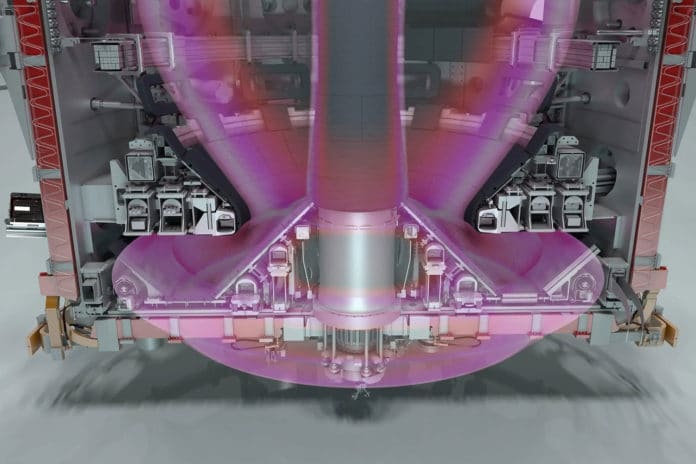Nuclear fusion is one of the most promising options for generating clean energy that the world desperately needs. Fusion could bring us abundant, low-carbon energy – but to put it on the grid, we need an exhaust system that can last for many years in a power plant.
This is one of fusion’s biggest challenges, and UKAEA is tackling it with a world-first concept, called the Super-X divertor, on its new MAST Upgrade experiment.
Culham scientists have successfully tested a world-first concept that could clear one of the major hurdles in developing fusion energy. The world-first tests were carried out on the MAST (Mega Amp Spherical Tokamak) Upgrade nuclear fusion experiment at Culham in Oxfordshire.
The approximately £55m MAST began operating in October 2020, after a seven-year building process. Initial results have demonstrated the effectiveness of an innovative exhaust system designed to make compact fusion power plants commercially viable, the UK Atomic Authority (UKAEA) explained in a report. Without greenhouse gas emissions and abundant fuel, fusion can be a safe and sustainable part of the world’s future energy supply.
Based on the same principle by which stars produce heat and light, fusion energy has the potential to provide an almost unlimited amount of energy in a sustainable manner. Using a machine called a ‘tokamak,’ a fusion power station will heat a gas, or ‘plasma,’ enabling types of hydrogen fuel to fuse together to release energy that can generate electricity. This is a game-changer for achieving fusion power plants that can deliver affordable, efficient electricity.
One of the biggest obstacles to the development of commercially viable tokamaks is the removal of excess heat generated by the fusion reaction process. If not removed effectively, the intense heat can damage materials in the reactors, significantly shortening the life of the plant.
The solution tested in the MAST experiment was an exhaust system, known as a ‘Super-X divertor,’ that would allow components in future commercial tokamaks to last for much longer, greatly increasing the power plant’s availability, improving its economic viability, and reducing the cost of fusion electricity.
“We built MAST Upgrade to solve the exhaust problem for compact fusion power plants, and the signs are that we’ve succeeded,” said Dr. Andrew Kirk, UKAEA’s Lead Scientist at MAST Upgrade. “Super-X reduces the heat on the exhaust system from a blowtorch level down to more like you’d find in a car engine. This could mean it would only have to be replaced once during the lifetime of a power plant.“
Recent tests have shown at least a tenfold reduction in the heat on materials with the Super-X system. The new invention is an important step in the plans of the United Kingdom Atomic Energy Authority (UKAEA) to build a prototype fusion power plant – known as STEP – by the early 2040s.
